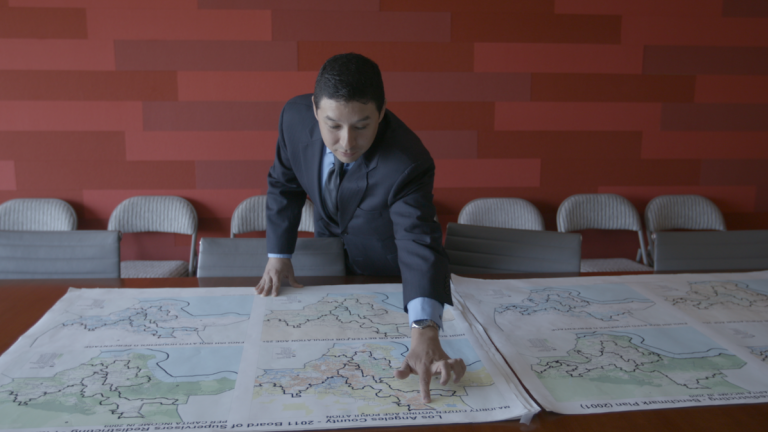
Military Goes Green
With the price of gas hovering around $4 and electricity bills on the rise, who would you think is on the forefront of green energy? Big utility companies? Auto manufacturers? Silicon Valley? How about the Pentagon? The Pentagon has ordered all branches of the armed services to fight energy costs while developing secure sources of energy for bases at home and troops in the field. Correspondent Brian Rooney takes a look at how the military is saving energy, saving money, and possibly saving lives.
TRANSCRIPT:
Brian Rooney: War takes energy, not just from the people fighting, but in delivering food, bullets, equipment and energy itself to the front. Getting soldiers to where they can fight requires 22 gallons of gasoline every day for each soldier in the field. So 80 percent of supply convoys carry fuel that is vulnerable to attack.
Looking to reduce the target of the supply chain and cut costs, the military is going green in a new way.
Col. Kurt J. Pinkerton/Commander, Ft. Irwin: First, there's the economic benefits, and second, there's the tactical benefits of being green. If we have to transport less fuel, if we have to move less logistics, again, that keeps our soldiers safer on the battlefield.
Rooney: From the ground to the sea and the air, America's armed services burn 300,000 barrels of oil a day. The Pentagon spends roughly $11 billion a year on energy, more than $8 billion of it on petroleum fuels. Saving fuel means more than saving money. In 2010 in Afghanistan, there were 1100 attacks on fuel convoys. If they can cut down the convoys by 20 or 30 or 40 percent, they're also saving lives.
The reasons for going green are tactical. But they're also financial. The services are under a mandate from the Pentagon to get creative - generate their own power with sun and wind, find non-petroleum fuels for helicopters, and make the ships more fuel-efficient.
Professor Ann Karagozian/UCLA: The military itself uses the vast majority of fuels and derives its energy from fuel to a far greater extent than any other entity in the U.S. government. It's over 90 percent of the fuels that are consumed within the U.S. government are consumed by the Department of Defense.
Rooney: UCLA Professor Ann Karagozian has been a scientific advisor to the Air Force.
Karagozian: The DOD is looking at new technology that could be game changers in many different ways, and we've seen examples of that in our daily lives. The Internet was a military development. So was the satellite navigation, known as GPS, that finds your way on unfamiliar streets. Now the military appears to be leading the way in energy development and conservation.
Jackie Pfannensteil/Assistant Navy Secretary: Energy security is national security.
Rooney: An assistant secretary of the Navy recently spoke at the ground breaking for a new solar collection field that will supply a third of the power at China Lake Naval Air Weapons Station.
Pfannensteil: People are going to look back and say once the military got into this, it moved a lot faster.
Rooney: Renewable energy is already embedded in the operation of the National Training Center at Ft. Irwin in the California desert, where soldiers are trained before going overseas, and the base commander is also under orders to save and produce energy.
Pinkerton: The objective is to become net zero. Meaning I have as many renewable energy sources providing me energy as I do the grid and I kinda balance out. I have a negative cost impact.
Rooney: The roof over his head has solar film that supplements power. Rooms have motion and light detectors. The temperature and light in his headquarters are controlled by this computer in an electrical closet. So, for instance, it turns lights on when people enter a room and will turn them off when they leave. It will balance the lights against daylight coming through the windows. And it also reports back to you on energy use and consumption. So, for instance, this is a graph of energy saved in the last 3 hours, 24 hours, 7 days. It will tell you everything about energy use and money savings in the building. The base itself is bristling with solar arrays that reduce electric bills, from the street lights lining the base's main road to the computer-intensive training center that runs partly on solar power. Even the mess hall is powered partly by the sun. This storage warehouse is entirely off the grid, depending on its own solar collectors and batteries. And those gas-guzzling Humvees are reserved for training, while soldiers buzz around the base in electric cars you'd never send to war. It's a new kind of Army green, and they're taking it into the field as well, where a soldier on patrol lugs a hundred pounds of gear.
Pinkerton: Ammunition probably weighs 20 pounds or so, batteries another 10-15 pounds. We're currently experimenting and looking at what I'll call green ammunition. It's lighter in weight; it's more effective; it's environmentally friendly, as strange as that sounds.
Rooney: The Marines have already taken light solar power generators to Afghanistan. Those are solar panels on top of blast walls. With an acronym for everything, they call it Ground Renewable Expeditionary Energy Systems - GREENS. Solar panels and batteries have allowed them to go a full week without turning on a gas-powered generator.
Capt. Brandon Newell/Expeditionary Energy Officer: What this is built for and designed for is the smallest of locations with maybe a fire team or maybe a squad size that only uses communications capability.
Rooney: They also have folding solar collectors that can go in their rucksack to charge radio batteries and small electronics. They have insulated tents now - cheaper to cool in the desert. The Marines have an ambitious plan to cut their energy in half by the year 2025. But it's easier to go green on bases at home. At China Lake where they are building that new solar array, they've been producing more power than they can use since 1987, selling it back to the grid. Deep in the interior of a volcanic mountain range inside the base perimeter, bubbling mud reveals the power that lies beneath.
Steam from a geothermal field along a fault line powers nine generators that run 24 hours a day without depending on wind or sun or any kind of fuel to make electricity.
Andrew Sabin/Director, Navy Geothermal Program: This field will run pretty much indefinitely, or certainly for the next 50 years anyway.
Rooney: Considered to be somewhat experimental in its time, this geothermal power operation has proved that it can be duplicated on other large pieces of military real estate in the West.
Sabin: There are several other military bases, large military bases, where we are working right now. According to the U.S. Geological Survey, there is potential for several thousand more megawatts.
Rooney: In China Lake's laboratories, scientists are perfecting a plant-derived jet fuel to wean fighter jets off foreign oil. This is the current petroleum-based jet fuel. You can see it's a little yellowish with impurities. So what they're working on is making jet fuel out of plant material - say, for instance, sugar cane stalks after the sugar's been removed. From that, they get butanol, and after a further refining process they can produce a clear, clean-burning jet fuel that might even be better than what is used now. The Navy has already flown an F/18 fighter on this mix.
Michael Wright/Senior Scientist, China Lake: The idea is that this blend, what we're certifying is meeting the fit-for-purpose specs that are used for JP-5 or Jet-A right now. So they're not saying, "Oh, you have a bio fuel, we'll allow you to get by with it not having to perform in this category, you get a waiver for this one." No - the same fit-for-purpose specs that you have for petroleum-based fuel. So there's no allowances made for that.
Rooney: They know how to do it. They just have to learn how to produce it on a large scale.
Wright: I'd jump in a Cessna Citation right now, put a hundred gallons of my fuel in there and push the throttle forward. Wouldn't have a second thought about it.
Rooney: Going green for the military involves a lot more - water conservation, garbage and waste reduction. It's about saving money at home and lives in the field by becoming more energy independent. For the military, going green isn't a request. It's an order.
This is Brian Rooney, SoCal Connected.























